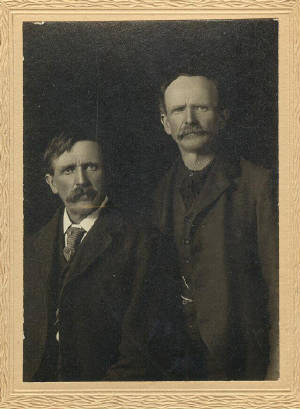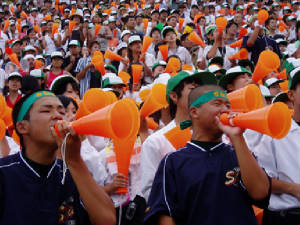|
Like many sports, the earliest days of pitchball have strong elements of folklore. The best anyone can determine, pitchball
began in the earliest days of the 1920s in Columbus, Ohio. It is said that two friends, Anthony Bluefish and Malcolm Ross,
were walking down an urban street one early autumn evening. As the two men walked along, they passed under a walnut tree.
For no real reason both Bluefish and Ross picked up fallen walnuts from the ground. A few seconds later Ross challenged Bluefish
by saying that he could toss his walnut closer than could Bluefish to pole across the street. Bluefish was up to the challenge
and gently tossed his walnut across the street, the spherical nut bouncing one, rolling a few feet, and came to rest near
the base of the streetlight. Next it was Ross's turn and he tossed his walnut at the same target. The two men had been golfers
but had become disenchanted with the sport due to high green fees, slow play, and courses inconveniently a distance away.
But they knew at once they had found an alternative form of recreation in this game of pitch. Today no one knows who won that
first pitch. Legend has it that the two pitches came to rest exactly equal distant from the that streetlight's base. One thing
is undeniable; the game of pitchball had been born.
As the next few years rolled by, Bluefish and Ross continued to play their game, their only competition being each other.
But occasionally the curious would ask the men about their sport. Soon a sprinkling of others were taking up pitchball. The
game required so little equipment, and paved parking lots were becoming more and more commonplace, pitchball could hardly
help but gain in popularity. By the early 1940s it was clear the game was here to stay. In 1946 John Wade wrote down official
rules for the contest, thus solidifying pitchball in the tapestry of American sport.
The first organized amateur pitchball competition was held in 1951 in Urbana, Illinois. That first contest was a "pro
pitch" format. Forty-eight pitchballers showed up for the three day competition each paying $3 entrance fee. Tony Cavolinni
won the inaugural event with Luke Scott finishing second. The following year fifty-five competitors arrived in Hartford, Connecticut
for the event. Vince Hamilton won that year in a six pitch sudden-death playoff defeating the second place finisher of the
previous year, Luke Scott.
Twenty years later, in 1972, two hundred and nine pitchballers applied to play in what by then had been named the World
Amateur Pitchball Championship. It was obvious that the popularity of pitchball had outgrown the event. So in 1973 ten regional
"qualifiers" were designated in various parts of the country.
Today pitchball is a thriving sport, to say the least. There is a budding pro pitchball tour called The American Pitchball
Association or, the A.P.A. There are weekly tournaments on the schedule. Most become sold-out events. Average winning purses
have grown to $300,000 with many of the pitchballers becoming well-known personalities in their own right. Some, like the
charismatic Scorpion Laine have corporate interests and are often seen in commercials or acting as product spokemen. Perhaps
more importantly, pitchball is being played by America's youth across the country. On any given playground a pitchball competition
might be under way, being played by a handful of children. Adults too have become attracted to the game. Company pitchball
outings are challenging golf outings in popularity. Recently exhibition tournaments have been played in Europe and Asia with
tremendous fan response. Yes pitchball is the coming sport. Who can deny it? Who would want to try!?

|
| A photo believed to be of Bluefish and Ross, circa 1922. |

|
| W.P.A. player Joe Zane receives cheers from avid Japanese fans during an Asia exhibition tour. |
|

